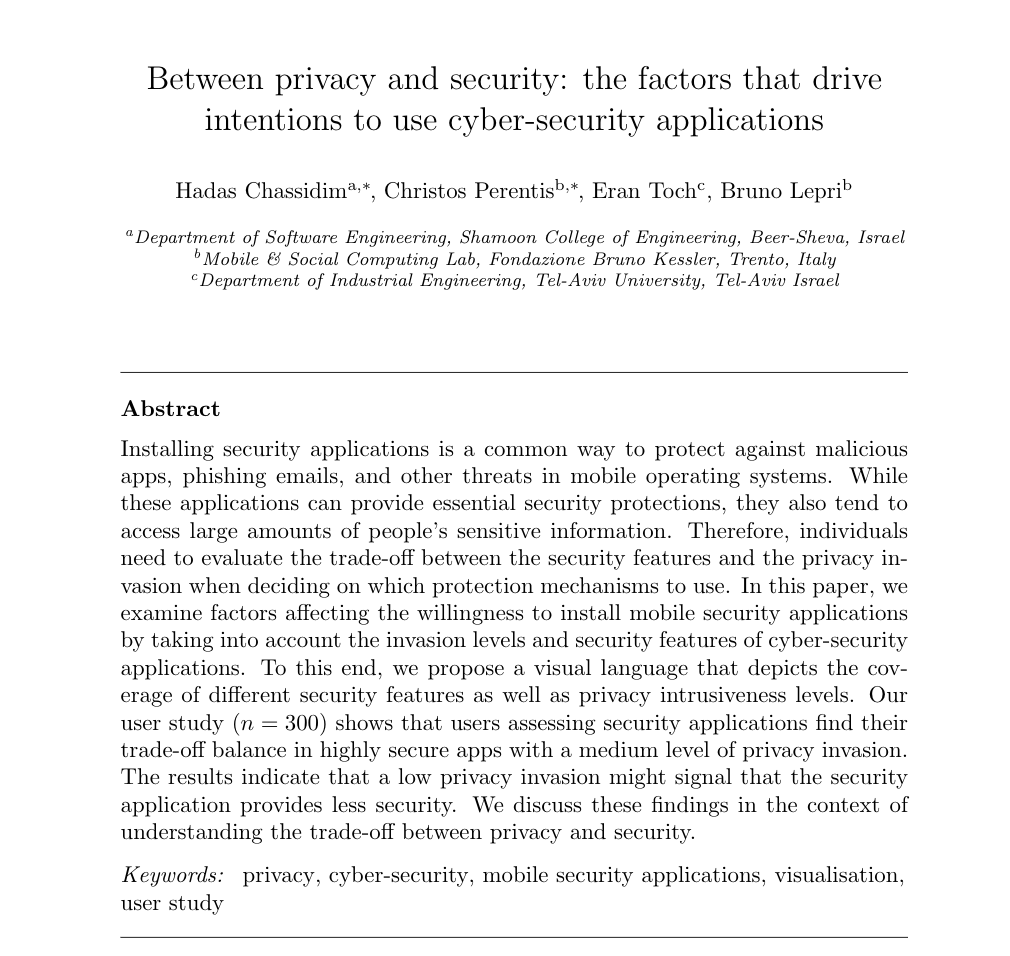I am happy to announce that a new collaborative paper was accepted for publication at the Behaviour & Information Technology Journal: “Between privacy and security: the factors that drive intentions to use cyber-security applications”. The paper is a collaborative work headed by Hadas Chassidim and Christos Perentis and with Bruno Lepri, head of the Mobile and Social Computing Lab (MobS Lab) at Fondazione Bruno Kessler (Trento, Italy).
Would users trust mobile anti-virus applications? The paper looks at a pretty straightforward settings: security apps installed on phones and computers can access pretty sensitive information, so they present a tradeoff to users: protection from third party adversaries versus privacy risks from the security companies themselves. How do users make decisions given this tradeoff? So our objective was to examine factors affecting the willingness to install mobile security applications by taking into account the invasion levels and security features of cyber-security applications
To answer this question, we have developed a visual language that depicts the coverage of different security features as well as privacy intrusiveness levels. We have used it in a vignette study with 300 participants. The results show that users perceive that a low privacy invasion might signal that the security application provides less security.
The paper is part of the project Privacy-Aware Cyber-Security, funded by the Israel Ministry of Science-Italy Cooperation, with other PIs, Erez Shmueli (TAU), Claudio Bettini (Milan) and Bruno Lepri (FBK).


Comments are closed.